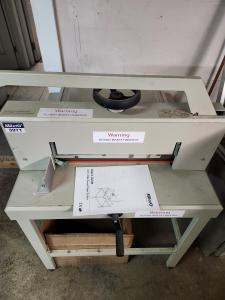POP stars: How in-store displays seal the deal

In-store moments still matter—a lot. While digital ads follow us everywhere, it’s often that final glance at a product display that seals the deal. This, experts say, is the power of point-of-purchase (POP) displays in the world of digital out-of-home (DOOH) advertising: they meet shoppers when intent is highest and decisions are being made. To explore how POP is evolving in Canada—and why it’s more important than ever—Sign Media Canada spoke with Matt Fitzgerald, director of Enterprise Sales at Vistar Media, on what’s driving this shift and where it’s headed next.
Sign Media Canada (SMC): Why do POP displays matter?
Matt Fitzgerald (MF): POP displays matter more than ever because brands and retailers recognize the critical value of connecting with consumers at the final stage of their purchasing journey. POP is the last chance to make an impression when consumers are in the shopping mindset, from grabbing last-minute items from their lists or impulsively adding fun additions to their shopping cart while waiting to check out. According to a Vistar Media report, about 44 per cent of shoppers say they’ve purchased because of an ad viewed in-store, and these displays continue to provide a powerful touchpoint to influence decision-making, enhance the customer experience, and reinforce messaging at the moment of intent.
And we know it works. In fact, 58 per cent of shoppers who viewed a front entrance ad bought the advertised product immediately. These displays break from crowded shelves and entice shoppers as they weigh their options.
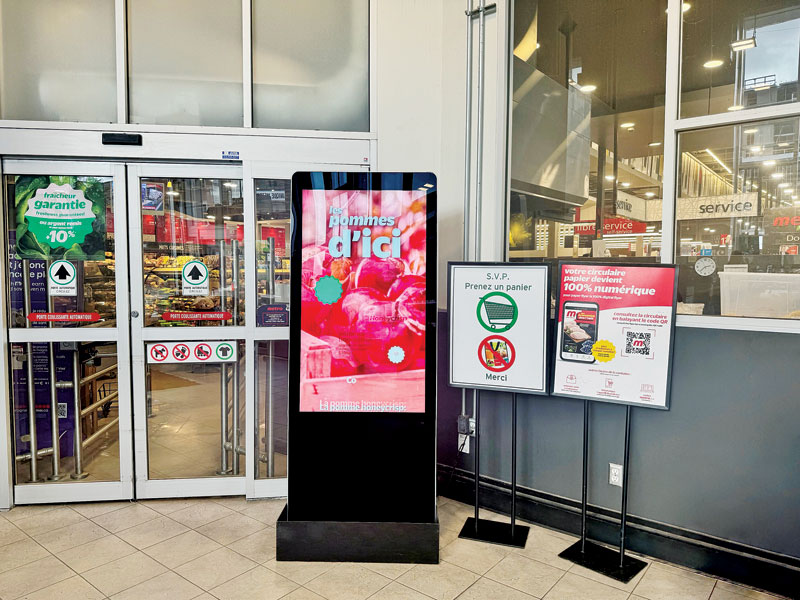
Beyond the point of purchase itself, digital signage networks placed strategically throughout a store—whether at the entrance, in category zones, or near featured products—create opportunities to tell compelling stories and guide shoppers as they move through the retail environment. Recent studies have shown that consumers view advertisements in-store positively and feel they improve their experience, whether adding visual appeal (50 per cent), additional product information (34 per cent), or entertainment (27 per cent). This integrated storytelling helps build brand loyalty and drives immediate sales impact through various touchpoints in one central shopping location.
SMC: How fast are POP displays shifting to digital, and what drives this shift?
MF: POP displays are shifting to digital rapidly as both publishers and retailers recognize the power of data-driven storytelling at the point of purchase. Digital displays unlock dynamic capabilities—think limited-time promotions, count downs to local events, product launches, and even weather triggers—allowing brands to deploy targeted messages based on time of day, day of week, or specific store contexts. A single screen can rotate creative and messaging to match shopper intent at various times: in the morning versus evening, such as promoting mints after a morning coffee or a sweet or salty treat for a commute home from the office; holidays versus regular weekdays, with last-minute gifts or candies to pick up on the way to holiday get togethers. Dynamic creative gives brands the capabilities to enhance relevance and engagement by deploying new advertisements that can feel personal yet timely.
More and more retailers see the benefits of converting in-store displays to digital screens. Whether it’s optimizing retail space or effectively leveraging first-party loyalty data collected from their customers through their own channels, such as loyalty programs, email sign-ups, and more, for retailers, the benefits are twofold; they can effectively drive in-store sales while monetizing on first-party data they already own and collect.
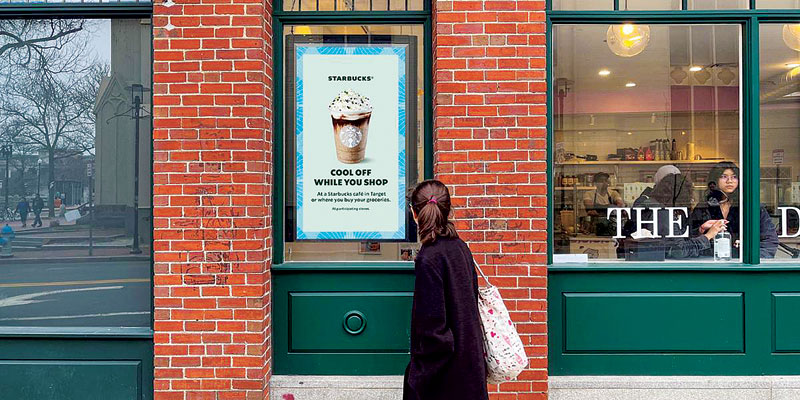
To bring digital displays to life, it’s a collaborative process as retailers leverage first-party loyalty data to personalize content, while publishers layer audience insights to optimize reach. This agility and precision drive a fast, ongoing shift to digital POP displays.
SMC: Are POP displays the last mile of DOOH in Canada? Where does it feature in marketing?
MF: Yes, POP displays represent the last mile of DOOH advertising in Canada, offering a critical opportunity to influence purchase decisions at the point of sale. Whether showcasing promotions as customers enter the store, highlighting relevant products in specific departments like the deli, or promoting payment options at checkout, these displays deliver highly contextual, timely messages when intent is highest.
POP messaging also extends beyond the store environment—for example, in warehouse-style clubs such as Costco, where shopper profiles allow brands to target lifestyle-driven messaging, such as advertising family-sized SUVs as customers exit. This direct line to consumers at decision-making moments makes POP a crucial final touchpoint in the marketing journey.
SMC: Can digital POP displays close the loop on DOOH campaigns by converting attention into immediate action, and how are we measuring that?
MF: Absolutely. Digital POP displays uniquely enable closing the loop on DOOH campaigns by directly linking consumer exposure to purchase behaviour. Integration of ad log data with retailer point-of-sale (POS) systems allows precise measurement of campaign effectiveness. When customers are exposed to a brand message at specific times via POP displays, this exposure data can be cross-referenced with POS data to track purchasing patterns and identify sales lift. This seamless data connectivity proves the impact of campaigns in near real-time and allows brands and retailers to use these insights to optimize messaging strategies, budgets, and targeting for maximum return on investment.
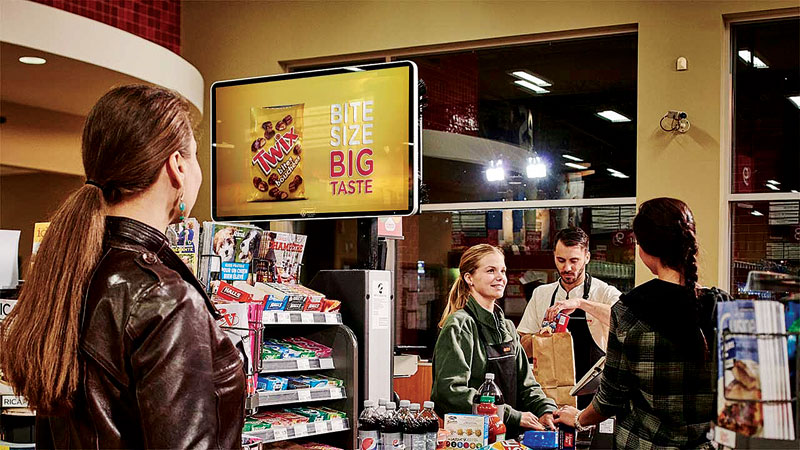
SMC: What uniquely Canadian themes are shaping the next wave of POP? Do you have any recent examples?
MF: One of the most prominent themes shaping POP in Canada today is national pride. With the popularity of the “Buy Canadian” movement, Canadians are more than ever looking for ways to support local, whether grown, sourced, or produced in Canada. Brands have now taken the initiative to make it easier for consumers to spot Canadian products by leveraging a symbol such as a maple leaf or clear “Made in Canada” messaging. Amid growing consumer preference to support local businesses, communicating Canadian origin at the point of purchase resonates strongly. It is an effective way to help Canadians looking to show some local love identify key products more easily.
Digital POP displays enable timely messaging that educates shoppers about local sourcing and product authenticity, reinforcing trust and influencing purchase decisions. Beyond “Made in Canada” messages, POP displays can go further and highlight regional ties to different provinces, such as “Grown in Ontario” or “Sourced from P.E.I.”. This focus on regional pride taps into Canadian values and purchasing habits, driving a deeper emotional connection between brands and consumers.
SMC: How much do POP campaigns vary across provinces?
MF: POP campaigns in Canada vary significantly across provinces due to differences in consumer demographics, cultural values, language, and regional priorities. For example, campaigns in Quebec require bilingual messaging. They may emphasize local culture more heavily, such as relevant celebrities and media personalities, or even humour that translates well between French and English. Western provinces, on the other hand, focus more on outdoor lifestyles.
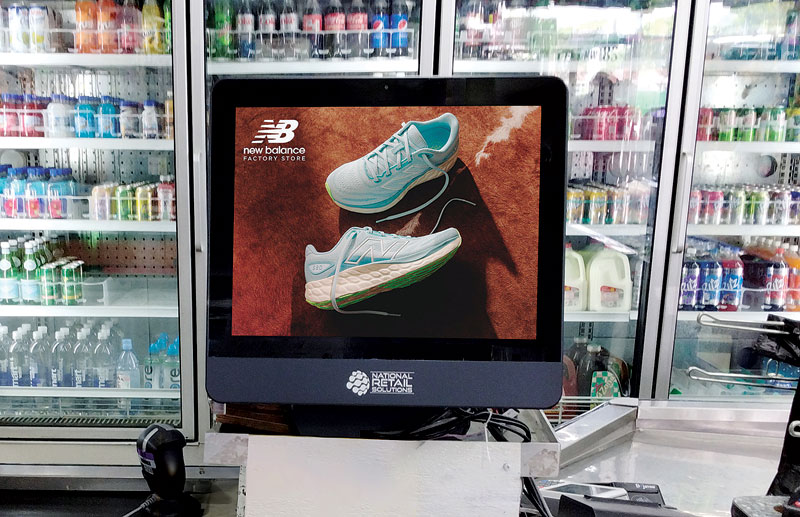
Seasonal differences also impact campaign timing and creative themes—for instance, winter messaging in Atlantic Canada differs greatly from milder regions. And of course, with recurring heat waves across Southern Quebec and Southern Ontario in the summer months, campaigns addressing this with refreshing recommendations to beat the heat and stay cool resonate well with consumers. Successful POP campaigns leverage these regional insights to tailor content that feels authentic and relevant to each market, maximizing engagement and effectiveness.

